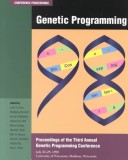The Morgan Kaufmann Series in Data Management Systems
3 total works
Proceedings of the Annual Conferences on Genetic Programming. These proceedings present the most recent research in the field of genetic programming as well as recent research results in the fields of genetic algorithms, artificial life and evolution strategies, DNA computing, evolvable hardware, and genetic learning classifier systems.
Object-Relational Dbmss
by Michael Stonebraker, Paul Brown, and Sister Dorothy Moore
Published 1 January 1996
Discover why object-relational technology is ideal for supporting a broad spectrum of data types and application areas, from financial services to multimedia data. In this completely revised and updated edition, database experts Michael Stonebraker and Paul Brown explore the object-relational paradigm and examine the most recent developments in the field. Specially written for database application programmers, database analysts, and IT managers, this book includes detailed information on how to classify DBMS applications, where object-relational DBMSs fit in the database world, and what mechanisms are required to support such an engine.
Many businesses are burdened by legacy ISs--existing systems that contain valuable data but lack the power or the agility to meet current organizational requirements. Since such systems are by nature resistant to modification, the only way an enterprise can gain full use of the data within one is to move to a completely new IS--ideally, one that won't become a legacy itself in a few years. This book discusses the challenges and provides a framework for a workable system migration, based on incremental modifications that allow the manager to control cost and risk. Focusing on data migration, the authors outline key techniques for transforming a legacy IS into a flexible system that meets current needs and is adaptable to unpredictable future changes. Because designing, developing, testing, and deploying a new system all at once would be extremely risky, the authors advocate a step-by-step strategy that migrates the system to a decomposable target environment while the current IS remains completely operational. Their flexible 11-step method allows any IS to be migrated incrementally, using gateways to access data reliably and accurately without any downtime.
Because each company's IS is as unique as its business strategy, the authors focus on the choices and pitfalls that may be encountered in an IS migration. Drawing on over 45 years of collective IS experience, they illustrate their work with two complete case studies of migration projects they worked on themselves. Their versatile solution is effective for any migration, including those to a client/server environment using relational DBMSs and 4GLs. Features a special survey of migration tools by Jennifer Schmidt. Note: the authors would be very interested in receiving a brief report on any successful legacy IS migration project using their methodology or any other, or of significant problems encountered in a migration attempt. As such projects take years, success can apply to the first significant increment.
Because each company's IS is as unique as its business strategy, the authors focus on the choices and pitfalls that may be encountered in an IS migration. Drawing on over 45 years of collective IS experience, they illustrate their work with two complete case studies of migration projects they worked on themselves. Their versatile solution is effective for any migration, including those to a client/server environment using relational DBMSs and 4GLs. Features a special survey of migration tools by Jennifer Schmidt. Note: the authors would be very interested in receiving a brief report on any successful legacy IS migration project using their methodology or any other, or of significant problems encountered in a migration attempt. As such projects take years, success can apply to the first significant increment.


